As rain clouds gathered in the sky on the first day of the Georgia Botanical Society Spring Wildflower Pilgrimage, a government truck came within view, slowly veered onto the grassy roadside, and stopped. A park ranger exited and approached our group. A few thought he had arrived to tell us to move our cars; instead, he waved us into the nearby woods. The sky began to grumble. The scant light in the forest began to grow fainter still. Suddenly, hundreds of small, dusty rose lanterns illuminated the darkening woodland, nodding above a copper and bronze carpet of last autumn’s leaves. Like the puffy pink clouds that frame the sun at the opening and close of day, the large lower petals — labella — of pink lady’s slipper orchids glowed in the shadows, as though they had captured some of the waning daylight.
The sky’s grumbles grew to thunderous shouts. Silver curtains of rain slipped through gaps in the leafy canopy. The storm cut short our visit to the orchids, but in those minutes, the orchids had enchanted me. I returned the next day.
Last week, I described the unusual floral morphology of the Fabaceae (bean or legume) family, with specialized petals that have distinct shape, function, and name. The Orchidaceae too, have specialized floral features; in brushing up my knowledge to write this post, I learned that I have incorrectly assumed orchids had six petals or perhaps tepals. (Some plant families, such as lilies and magnolias, lack distinct petals and sepals; these structures are simply called “tepals.”) Orchids typically have three sepals (which may be just as decorative as the petals) and three petals — two upper petals and one lower petal. This is the specialized petal — the lip or labellum. Its function is to attract pollinators and provide a space for them to land. In lady’s slipper orchids — subfamily Cypridioideae —the labellum is quite large, a disproportionately large mouth also called a pouch. The pouch temporarily traps pollinating insects; they cannot exit the way they arrived, and on their way out, pollen sticks to their legs. If this is not the first lady’s slipper to have lured them with its color and fragrance, they will also drop off the previous flower’s pollen on their way out, fertilizing the orchid so that it can set fruit.
The two upper petals of the North American pink lady’s slipper orchid, Cypripedium acaule, appear as twisted tendrils hanging from the flower’s crown, a pair of curls framing the orchid’s pouting face. A green sepal curves over the top of the petals like a slender hood. Each plant has a single flower suspended from a single stalk — called a pedicel — that rises from the ground between a pair of large, wide basal leaves with prominent, parallel veins. No stem, or at least, no visible stem, stretches from the soil to connect these leaves and pedicel. This is the source of the plant’s specific epithet — acaule means “without a stem.”
This absence of stem helps distinguish C. acaule from its rarer cousin, C. parviflorum, yellow lady’s slipper, which has a leafy stem. Sometimes flower color alone may not be relied upon — for example, when blooms are absent or when one finds the form of C. acaule that is not pink, but white or even pale yellow.
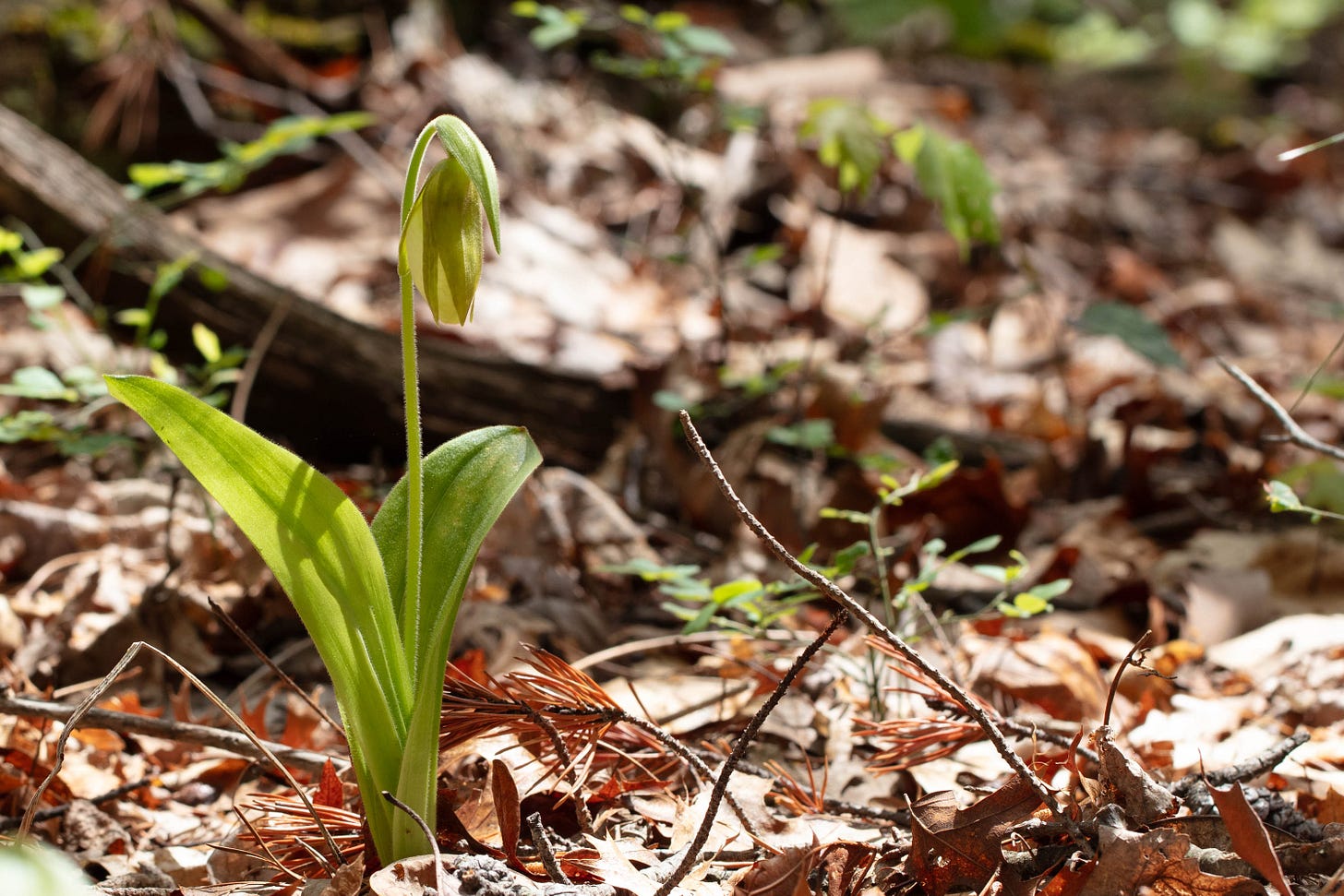
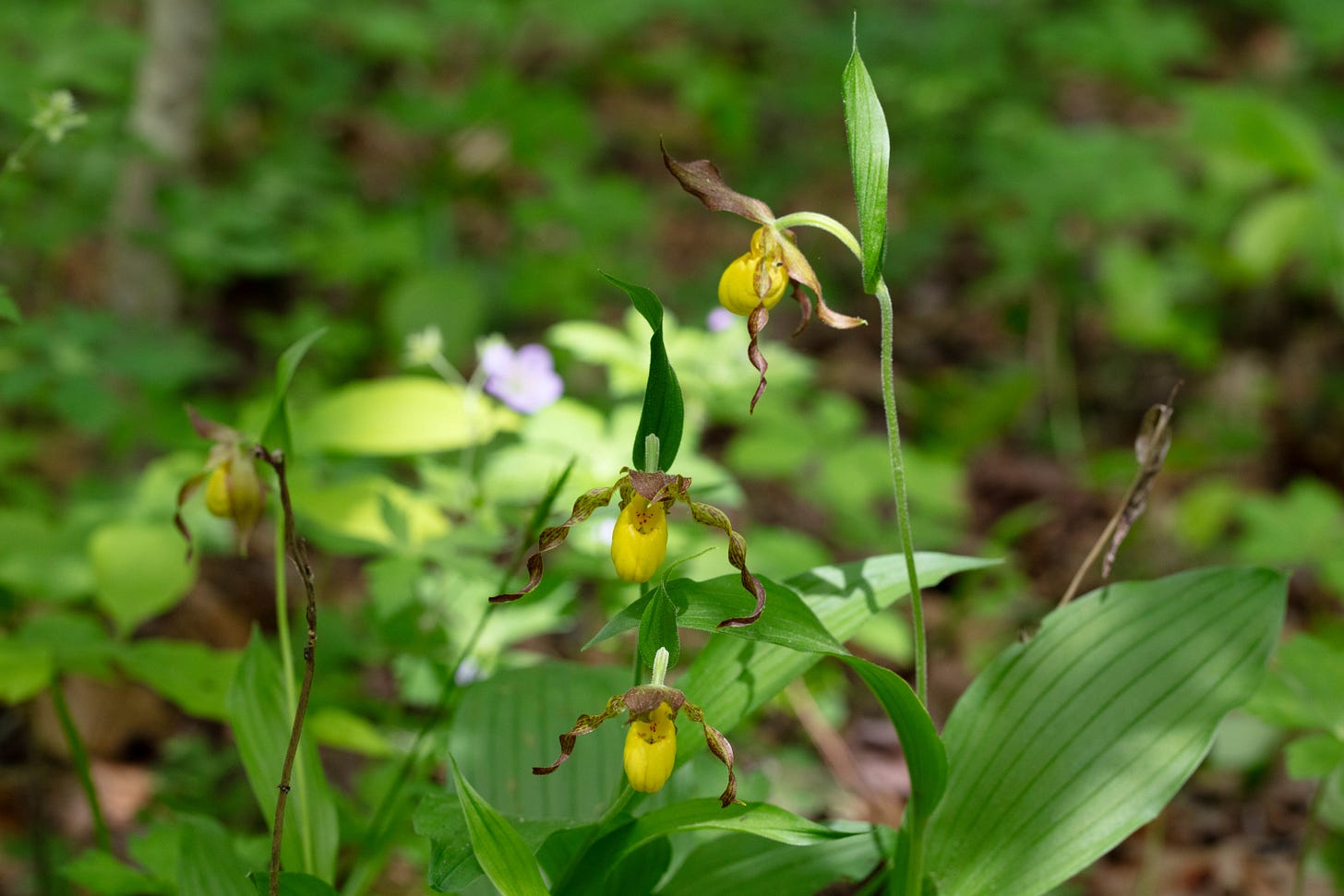
In the past, I have been unkind to the pink lady’s slipper. I have spoken unflattering words about this popular flower, particularly its labellum, describing it as veiny, pink, and bulbous like an inflamed blister. Once my mind made that comparison, I could not unsee it, and I am sorry if I have done the same for you by writing these words.
But I am not immune to the charm of finding a collection of these plants, blossoms like the slippers of otherwise invisible ballerinas dancing on air above the forest floor, a pale rose glow above the stripes of sunlit green between the veins of the large basal leaves.
This spring, when I saw hundreds of pink lady’s slippers in bloom, I was not without awe. I forgot about bulbous bags of veiny, inflamed skin. I saw only beauty.
In the past, I questioned the fuss made over protecting these orchids, since Cypripedium acaule is rare neither globally nor locally. Its NatureServe Conservation Status in Georgia is G5,S4 — globally secure and “apparently secure” in Georgia, despite being a target for poaching. But I learned from the Georgia Biodiversity Portal that “fewer than 10% of plants in a population will produce fruit in a given year.” This may because, after visiting a few pink lady’s slippers, bees learn that the flowers have little but beauty to offer them.
In the past, I had worried that so much focus on the pink lady’s slipper somehow distracted from species whose survival is not secure. But now I know — of the patch of hundreds of orchids that I saw two weekends ago, more than 90% will not produce seeds. What seems secure now may not be forever.
Further, love for an orchid is like love for any being. Love is not like matter, of which there is a finite quantity in the universe. Love has infinite capacity to renew, to grow, to multiply, and thus be shared.

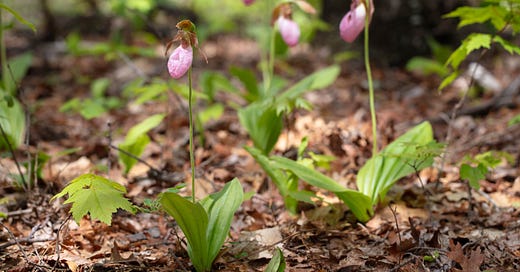


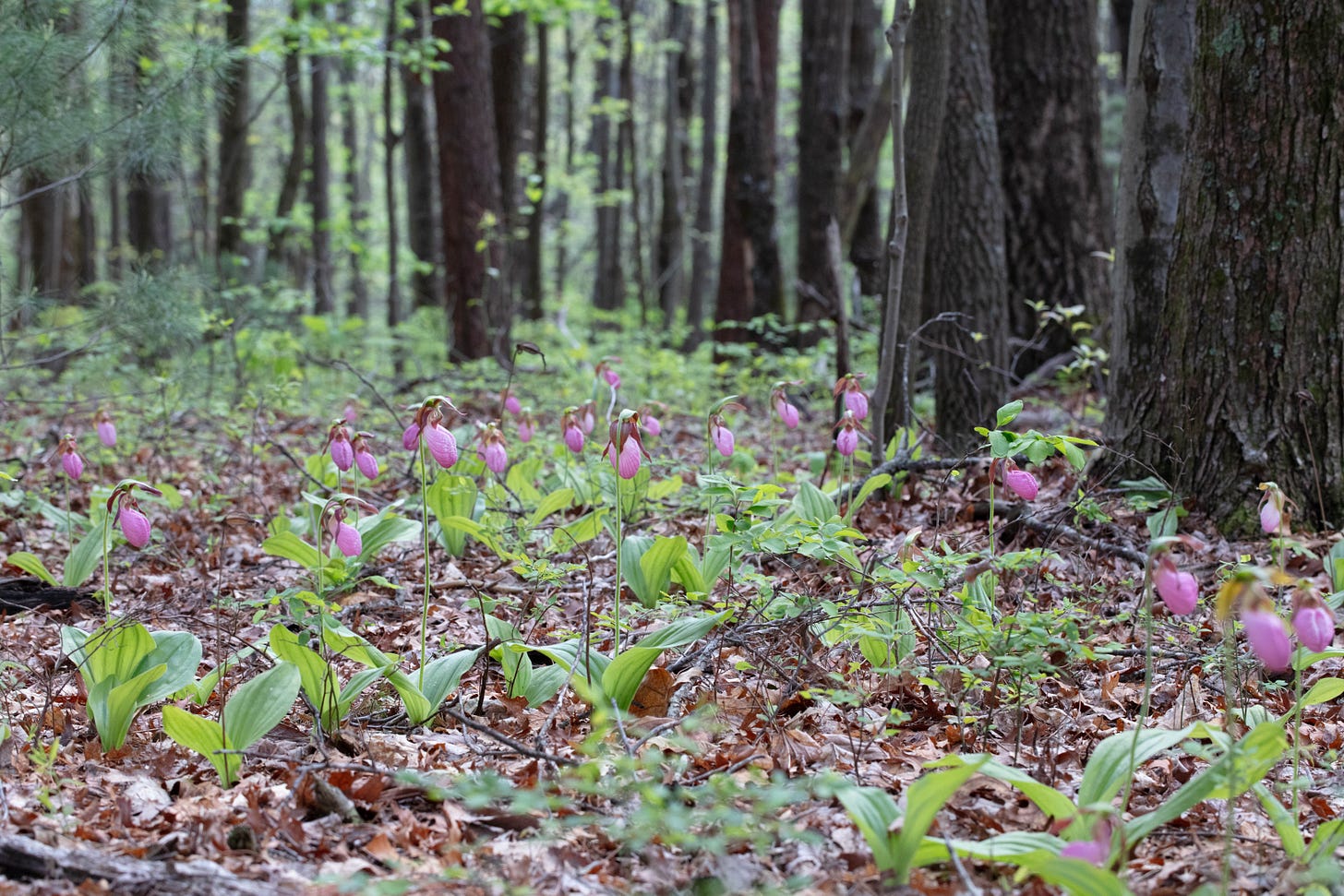
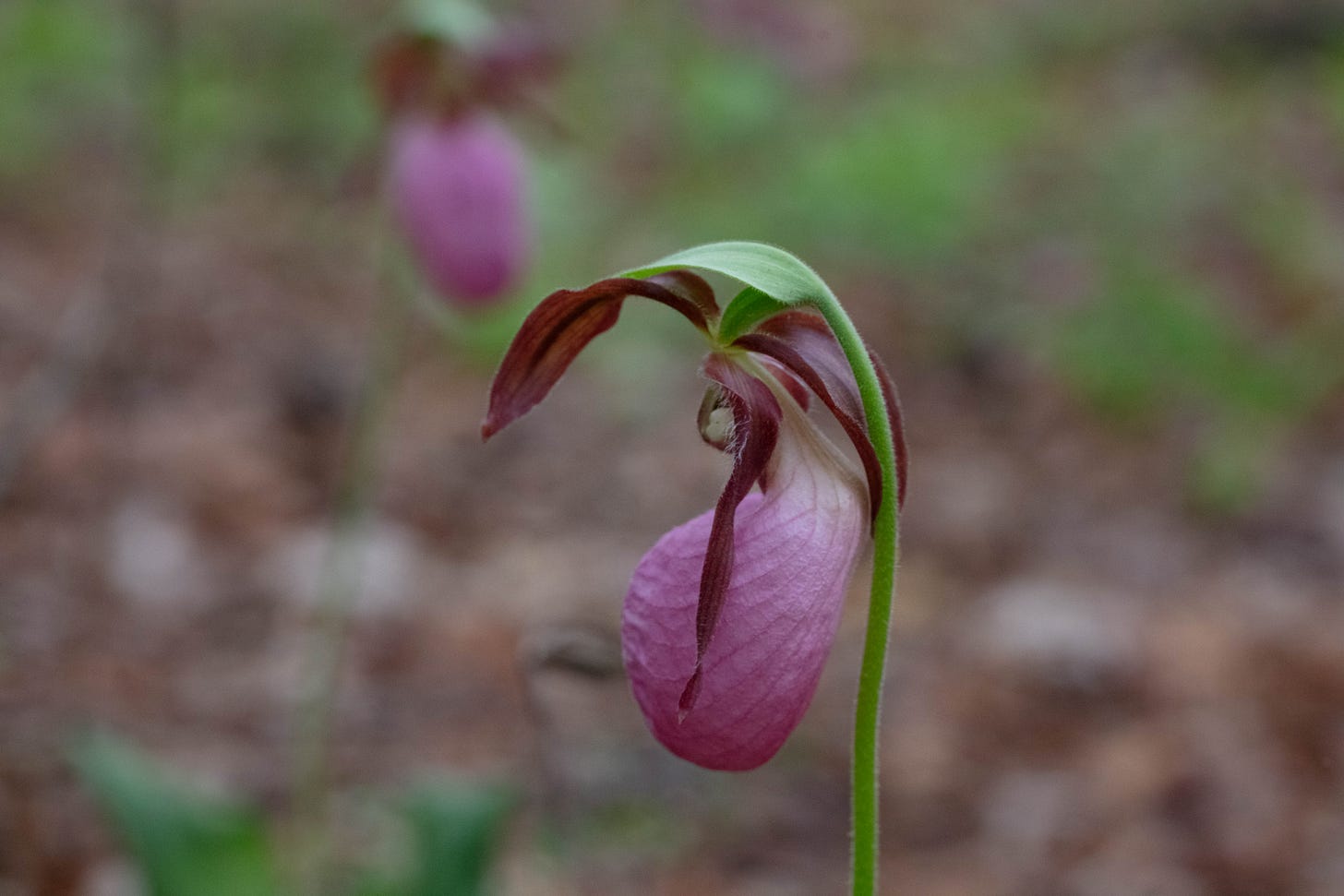
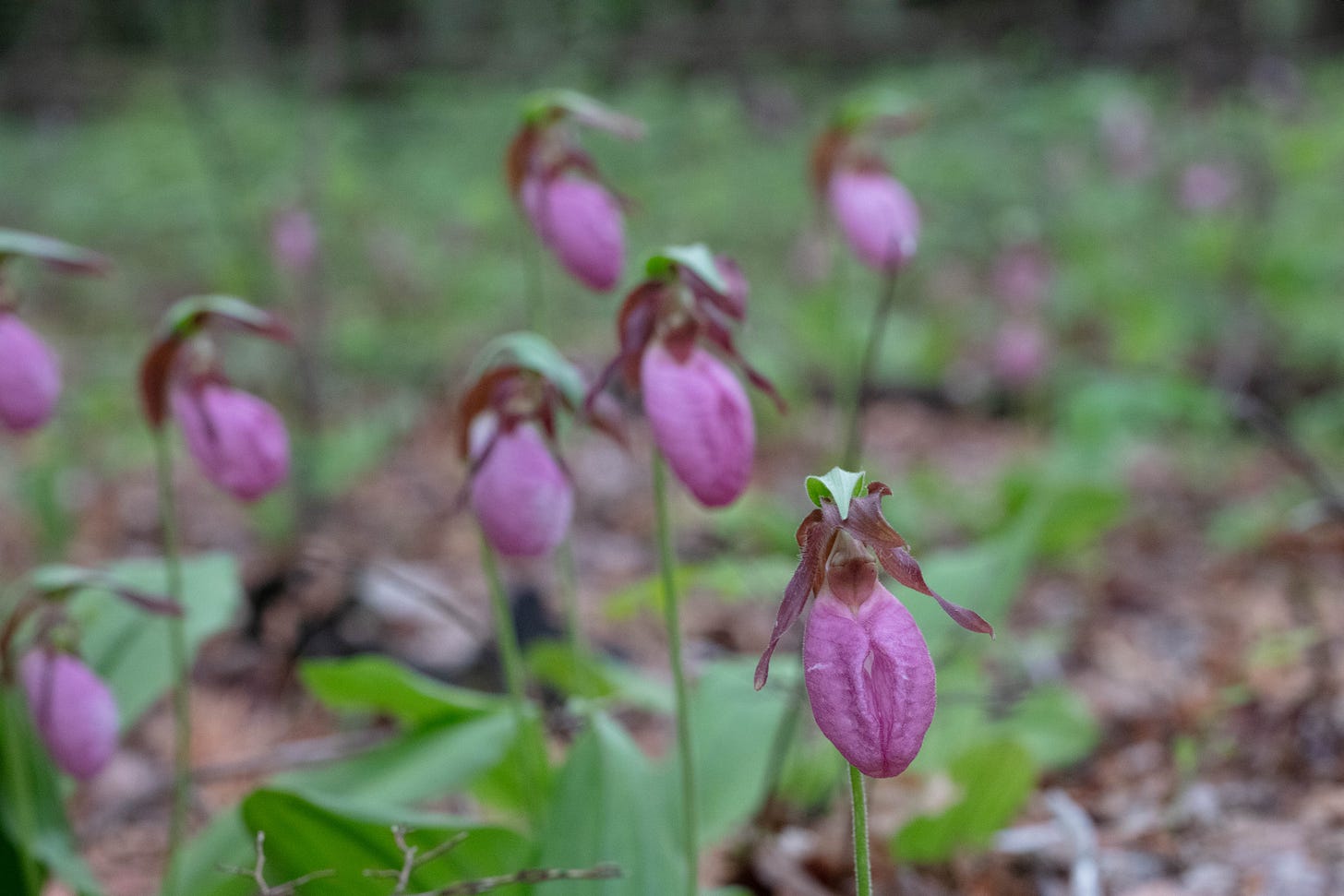


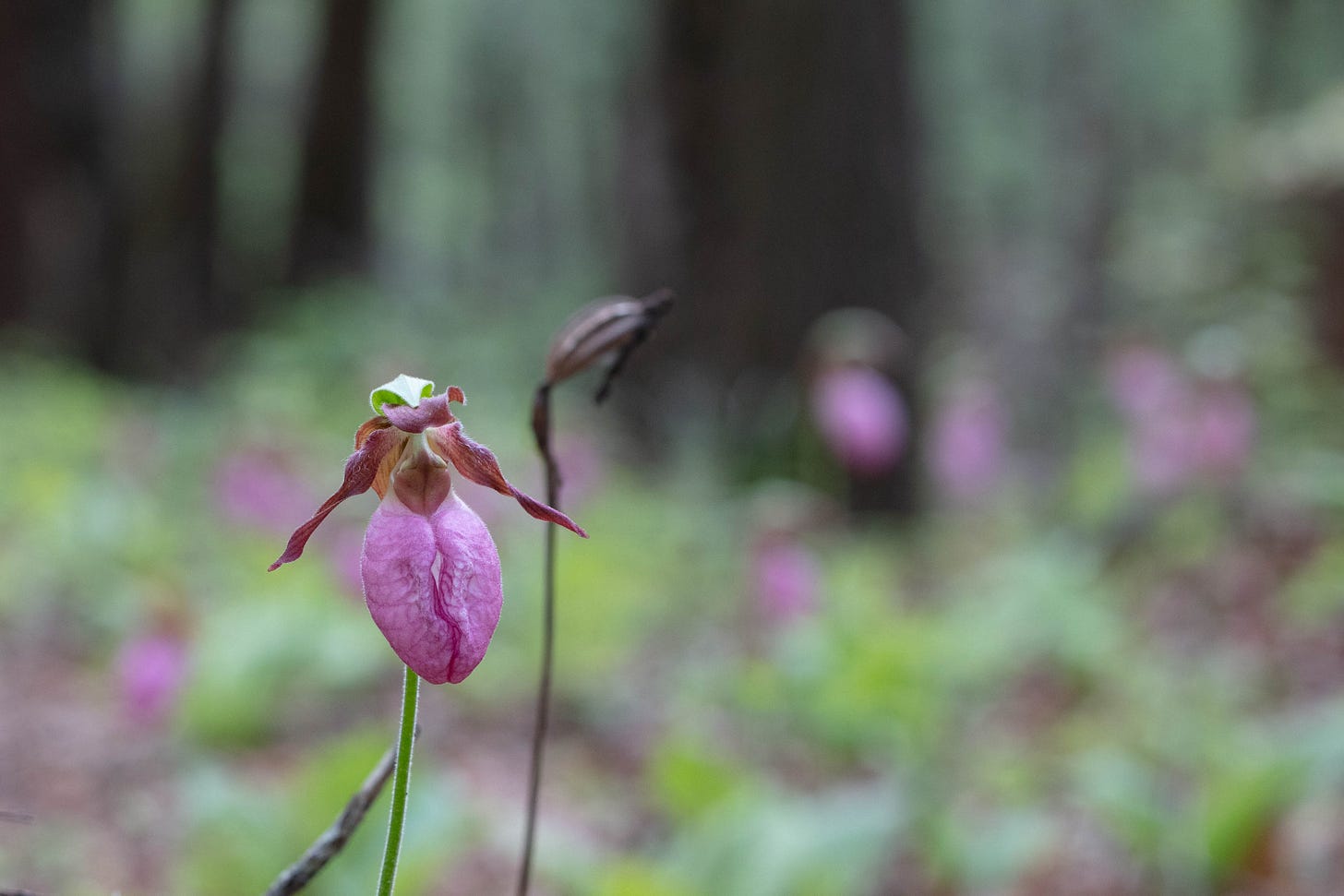
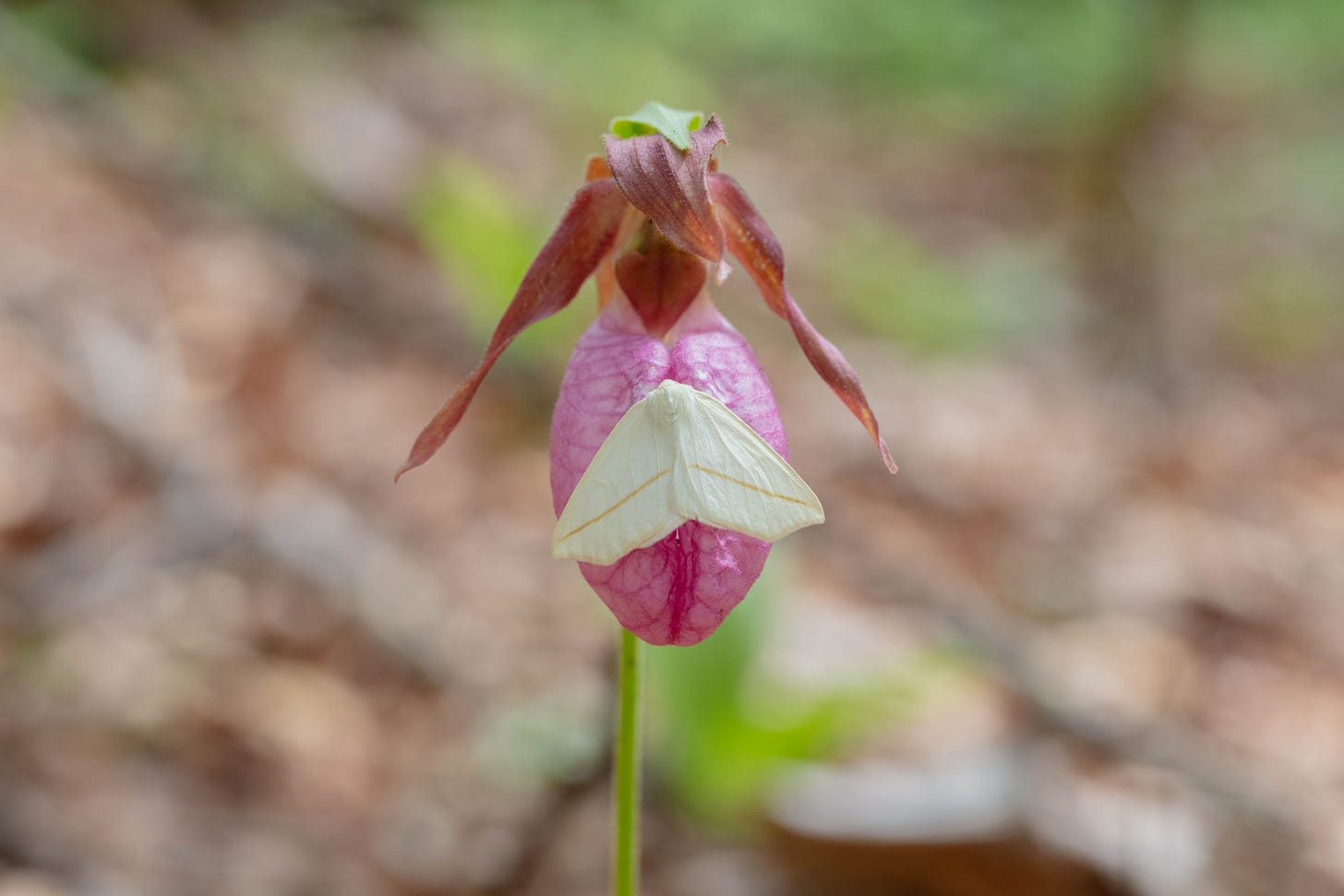
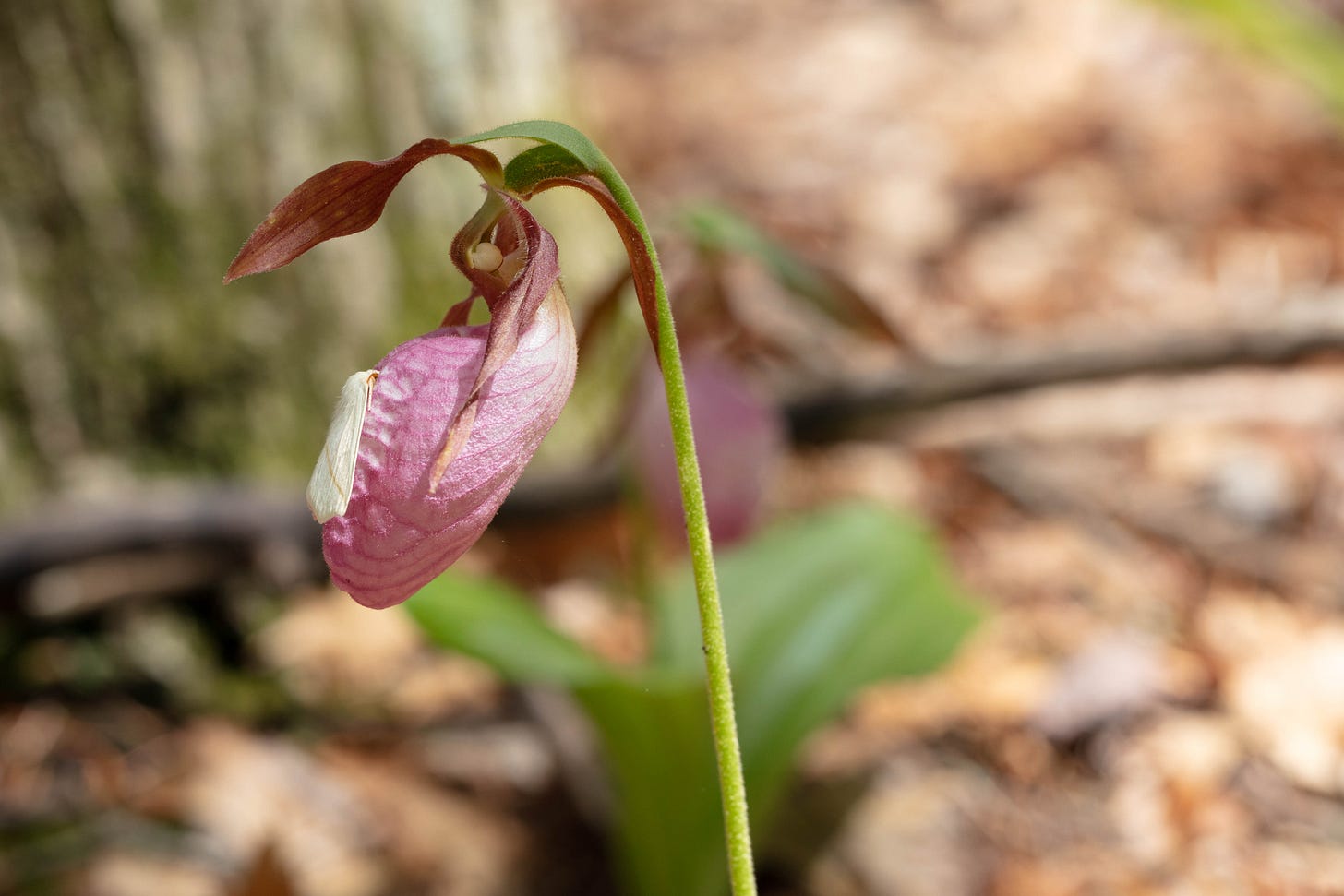
Such enchantment. I am smitten with the slant-lined moth on the pink lady's-slipper. I'm so glad to know that places such as these exist.
So many beautiful images in this one.